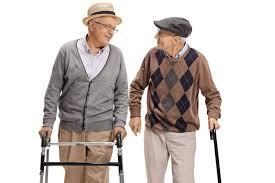
The Link Between Osteoporosis and Spinal Injuries in Older Adults
As a person begins to age, it’s only natural that their bones begin to deteriorate and weaken over time. This, combined with the likelihood of osteoporosis at an older age, can create unique risks for the elderly. Specifically, seniors are at a higher risk of injury directly as a result of the effects of osteoporosis. Learn everything you need to know about the link between this condition and potential injuries so that you can keep yourself and your loved ones safe.
What Is Osteoporosis?
Bone is a living tissue that is constantly being broken down and replaced in your body, but osteoporosis occurs when the creation of new bone doesn’t keep up with the loss of old bone. This uneven ratio leads to weaker bones and joints, so much so that a light fall or even heavy coughing fit can lead to a break.
In some cases, the onset or osteoporosis may not even be evident until a fracture or complete break occurs. Your gender, age, ethnicity, body size, and family history are the predominant factors which incidence whether or not you will be afflicted by osteoporosis, but lifestyle choices including drinking alcohol and smoking can also play a role.
How Osteoporosis Increases the Risk of Spinal Injuries
Naturally, given the weakening of bones and joints that occurs via osteoporosis, understanding how it relates to spinal injuries is important. After all, you don’t want to miss the signs of a herniated disc in adults, for example, as it could be indicative of an underlying issue that will result in further damage. Below are some of the risk factors between osteoporosis and spinal injuries:
1. Fragile Bones and Vertebral Compression Fractures
First and foremost, weak bones make the spine more vulnerable to fractures due to less support. Your bones are reliant on each other, to a degree, as your skeleton is one but a support system. Even degradation in a single bone can lead to major issue. Vertebral compression fractures are also possible which can result in symptoms like pain, a loss of height, and a hunched posture.
2. Herniated Discs and Spinal Degeneration
Building off of the prior point, osteoporosis can lead to the degeneration of your spinal disc. This can make even things as simple as standing or sitting uncomfortable through compromised spinal alignment and nerve compression. A herniated disc, for those unfamiliar, is when the soft center of your spinal disc blasts through the hard exterior. Normally this is rare or only caused by extreme action on your spine, but osteoporosis increases its likelihood.
3. Higher Risk of Falls and Their Consequences
As mentioned, your bones are a support system that keep you walking and balanced. If they degrade over time, you will naturally start to notice issues with your balance and increased muscle weakness. This can lead to falls which, when combined with the pre-existing osteoporosis, can lead to further injury.
Osteoporosis Prevention Strategies for Seniors
Even if you have a predisposition to osteoporosis, there are steps you can take to reduce the likelihood of it affecting you. Below are four key prevention tips:
- Improve Bone Health and Nutrition: Essential nutrients for bone strength like calcium and vitamin D will bolster your strength and should be taken
- Safely excesses to strengthen the spine: Take part in low-impact activities like walking, swimming, yoga, and work in weight-bearing exercises to improve your bone density over time
- Take fall prevention measures: Make home modifications to reduce fall risks installing handrails and motorized chairs while also investing in proper footwear and mobility aids
- Seek out medical treatment and physical therapy: There are medications for osteoporosis management that you can speak with your doctor about, but also consider physical therapy to improve spinal health
Keeping yourself protected against osteoporosis is all about taking preventative action before it impacts you, so the best time to start is now. By putting off self-treatment, you simply open yourself up to greater risk of injury as you get older.
Foster healthy bones for years to come
The connection between osteoporosis and spinal issues is a direct one. Due to this, it’s imperative that you take practice steps to protect your bones and overall spinal health, especially as you get older. Seek out medical attention if you have been injured, but also consider hiring legal assistance if the accident which caused your injury was due to negligence as opposed to the degradation of your bones via osteoporosis.